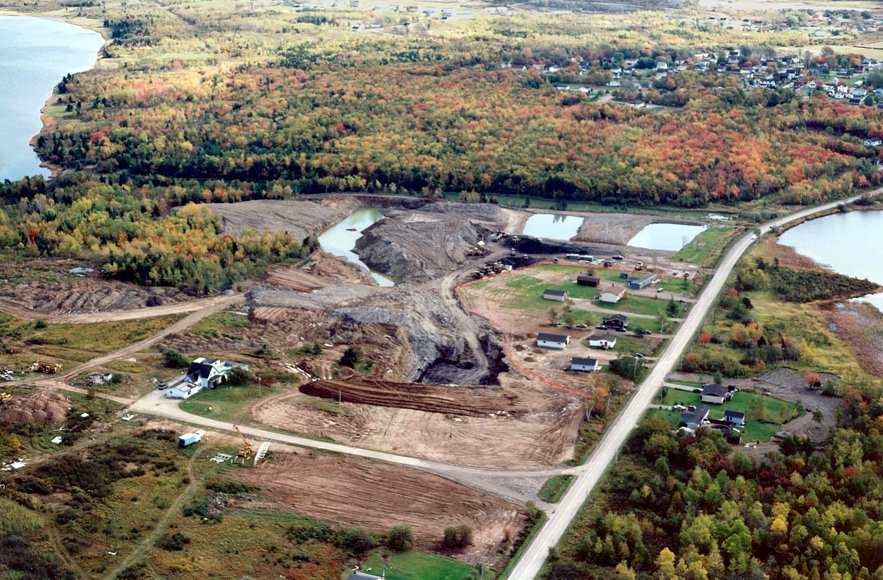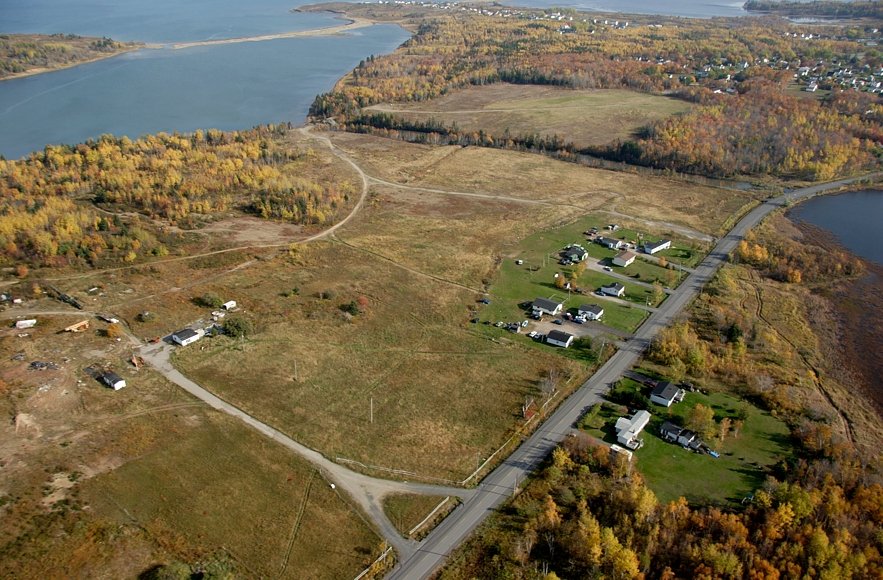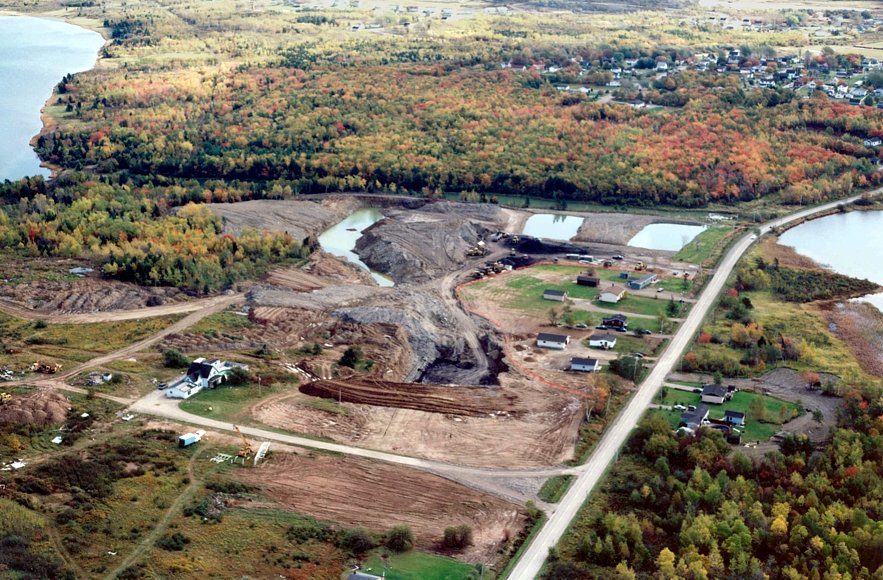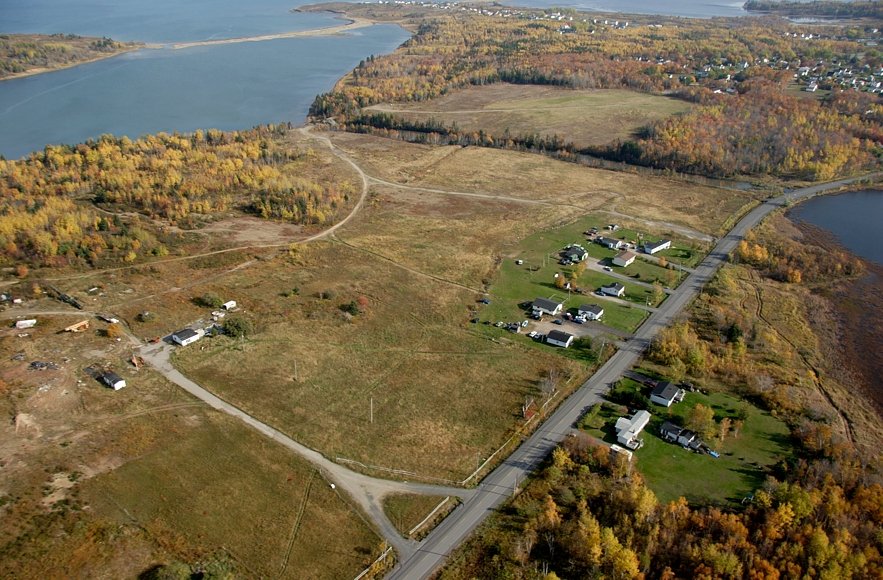The Sullivan Creek #coal mine, before and after!
It's one of several mines reclaimed around #AlderPoint #CapeBreton in the late 1900s/early 2000s - examples of how mining makes temporary use of land and then land can be used other ways.
#nspoli #cbpoli #novascotia @JaimeBattiste

It's one of several mines reclaimed around #AlderPoint #CapeBreton in the late 1900s/early 2000s - examples of how mining makes temporary use of land and then land can be used other ways.
#nspoli #cbpoli #novascotia @JaimeBattiste


The first mine in the area was the Scotia Mine, or #NovaScotia Steel & Coal Company No. 4 Colliery, on Toronto Road, which operated on the Sydney Main (Harbour) Seam from 1915 to 1921.
#nspoli #cbpoli #novascotia @JaimeBattiste

#nspoli #cbpoli #novascotia @JaimeBattiste


Coal quality and structural issues (including water inflow) plague the Harbour Seam west of Florence so upon closure of the colliery, production on the Harbour Seam was limited to the Company’s No. 3 Colliery in Florence, which had opened in 1902...
#nspoli #cbpoli #novascotia

#nspoli #cbpoli #novascotia


...and the Princess mine in #SydneyMines (see our history of the Princess Mine at
#nspoli #cbpoli #novascotia #capebreton

https://twitter.com/MiningNS/status/1239158443543613441and our history of Sydney Mines at
https://twitter.com/MiningNS/status/1302208551893504002).
#nspoli #cbpoli #novascotia #capebreton


In 1920 the Nova Scotia Steel & Coal Company opened the Alexander (aka Alexandra in some reports) Colliery, on the Lloyd Cove Seam, at Little Pond, but it closed in 1923.
#nspoli #cbpoli #novascotia #capebreton

#nspoli #cbpoli #novascotia #capebreton


The colliery was entirely land-based, but a plan was in place to mine the coal offshore through shafts to be located near the shoreline at Alder Point. That never happened. In 1921 the Company became a wholly owned subsidiary of the British Empire Steel & Coal Company, aka BESCO. 



In 1947 the Old Sydney Collieries Ltd. No. 7 Mine was opened at Little Pond, to work the Lloyd Cove Seam through a series of four large surface mines, running from north of Schoolhouse Road, southeast to the shoreline, a distance of almost 2 kms.
#nspoli #cbpoli #novascotia

#nspoli #cbpoli #novascotia


This company was a subsidiary of the Nova Scotia Steel & Coal Company, which was a subsidiary of BESCO.
#nspoli #cbpoli #novascotia #capebreton

#nspoli #cbpoli #novascotia #capebreton


Little Pond is where the first trials of the “DOSCO Miner” took place, a machine with a large rotating steel drum and teeth that scraped coal from the seam and carried it out of the tunnel on conveyor belts.
#nspoli #cbpoli #novascotia #capebreton

#nspoli #cbpoli #novascotia #capebreton


The DOSCO Miner would ultimately be used underground at all Dominion Coal Company mines and similar “continuous miner” machines are used widely today. In 1950 a small underground operation was started, the slopes being at the base of the surface mine near the intersection... 



...of the Schoolhouse and Little Pond Roads. The mine closed in 1956.
Illegal or bootleg mining is known to have been conducted on the Lloyd Cove Seam between Little Pond and Alder Point since the 1930s, but it was not until 1973 that the #CapeBreton Development Corporation...

Illegal or bootleg mining is known to have been conducted on the Lloyd Cove Seam between Little Pond and Alder Point since the 1930s, but it was not until 1973 that the #CapeBreton Development Corporation...


...opened a surface mine near the tip of Alder Point on the Lloyd Cove Seam. Just over 100,000 tonnes were removed by 1974 at which time production ceased.
#nspoli #cbpoli #novascotia #capebreton
#nspoli #cbpoli #novascotia #capebreton

Other surface mines would follow, including Cape Crushing’s operation at Merritt Point, just South of the former Alder Point operation (Lloyd Cove Seam), which started in 1991 and closed in 2005.
#nspoli #cbpoli #novascotia #capebreton
#nspoli #cbpoli #novascotia #capebreton

Brogan Mining Company operated at Sullivan Creek, on the Little Pond Road from 1993 to 1998, extracting approximately 60,000 tonnes. This mine worked the near surface coal left from the most southerly underground operations of the Scotia (No. 4) Colliery.
#nspoli #cbpoli

#nspoli #cbpoli


Brogan also operated at Toronto Road on the Sydney Main (Harbour) and Hub seams from 1995 to 1999.
#nspoli #cbpoli #novascotia #capebreton
#nspoli #cbpoli #novascotia #capebreton

Brogan operated at Little Pond on the site of the former Alexander and No. 7 mines from 1999 to 2003, subsequently moving North to Merritt Point, immediately South of the Cape Crushing operation, producing for a short time, 2004-2005.
#nspoli #cbpoli #novascotia #capebreton

#nspoli #cbpoli #novascotia #capebreton


The Alder Point, Little Pond and Toronto Road sites, along with the Point Aconi surface coal mine, were part of a study of reclamation practices from 2006-2012 (novascotia.ca/natr/meb/data/…).
#nspoli #cbpoli #novascotia #capebreton
#nspoli #cbpoli #novascotia #capebreton

The study looked at how soil can be made more accessible to pioneer plants to become established; how to preserve living organisms in the organic layer; how to create micro-habitats for seed germination and erosion control; how to encourage biodiversity...
#nspoli #cbpoli

#nspoli #cbpoli


...and how best to encourage the spread of vegetation on a reclaimed site.
The pictures show how mines/quarries can be transformed from operational sites to natural spaces.
Pictures and info about the Point Aconi reclamation are at
#nspoli #cbpoli


The pictures show how mines/quarries can be transformed from operational sites to natural spaces.
Pictures and info about the Point Aconi reclamation are at
https://twitter.com/MiningNS/status/1303282122250219525
#nspoli #cbpoli



• • •
Missing some Tweet in this thread? You can try to
force a refresh

























